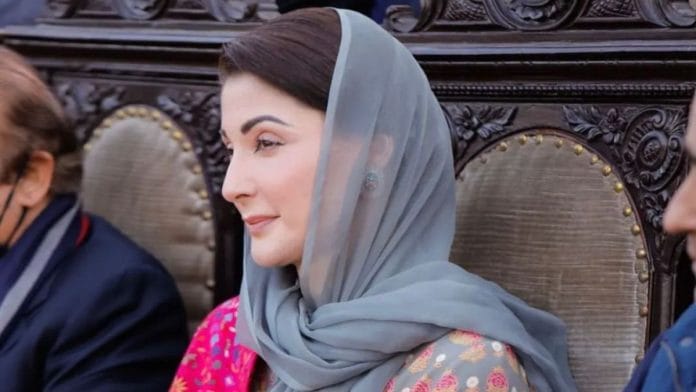New Delhi: Pakistan’s Punjab CM Maryam Nawaz has extended an unexpected offer of ‘smog diplomacy’ to India. Major cities, such as Lahore and New Delhi, in both countries are dealing with dense smog and are ranking among the world’s most polluted areas. However, policy experts argue that it might be too late for that.
Nawaz recently stressed the need for collaborative action at a Diwali event in Lahore: “This matter has to be resolved diplomatically with India. I am considering writing a letter to Indian Punjab’s chief minister. This is not a political issue; it is a humanitarian one.”
Following this, Punjab’s Environment Minister Raja Jahangir Anwar told Al Jazeera that she has also expressed interest in visiting Bhagwant Mann, the CM of Punjab, India, along with a possibility of hosting a regional climate conference in Lahore, which could serve as a platform for further discussions.
United by pollution perils
Both Lahore and New Delhi have been grappling with alarming air quality, with levels of fine particulate matter (PM2.5) frequently exceeding 300 micrograms—above the acceptable limit of 100 micrograms.
On Saturday, air pollution levels in Lahore, Pakistan’s second-largest city, saw a record high. According to data from IQAir, the air quality index surged to 1,067—far exceeding the 300 mark, which is classified as ‘dangerous’, prompting the government to implement an ongoing green lockdown in the city.
Speaking to ThePrint, Ahmad Rafay Alam, environmental lawyer and activist in Pakistan, said that in terms of governance, it’s crucial for politicians in India, Pakistan, and the broader North Indian region to prioritise the health and safety of their citizens.
As policymakers grapple with air pollution, the scale of the problem is staggering. The World Health Organization estimates that around nine million people die prematurely each year due to air pollution. “This immense figure isn’t evenly distributed around the world. Most air pollution in the world is concentrated in the cities of Asia and Africa,” Alam pointed out. “It affects everyone—our parents, our friends, our children and us.”
However, he remained skeptical about this potential commitment. Despite these encouraging signs, significant barriers remain. The issues range from lack of data to adequate acknowledgment of the impact of pollution beyond electoral cycles in Pakistan.
“The relationship between Delhi and Islamabad over the past decade—or longer—has lacked the vision and leadership necessary for such collaboration. Effective measures to combat air pollution depend on robust scientific data. Unfortunately, we currently lack the reliable data needed to drive meaningful change,” he added.
Also read: Why Pakistan’s stock market is setting new highs despite a crippling economy
Persistent problems & lack of data
Even in the absence of comprehensive data, numerous studies and reports have identified the primary contributors to air pollution year-round: the fuels used in vehicles, the reliance on coal and furnace oil for energy production, and industrial emissions from businesses that often use low-grade fuels to maximise profits. Crop burning does play a role, particularly during specific seasons, but it is not the main cause of the persistent pollution that plagues both countries.
Dawar Hameed Butt, co-director of the Pakistan Air Quality Initiative (PAQI), a climate research and advocacy group, told ThePrint that while such diplomatic initiatives are being discussed, it is late at this point, since crop burning subsides by the second week of November.
Karachi-based environment journalist Afia Malik said that “despite the baggage of acrimonious history”, there exists a “spirit of camaraderie and cooperation” within the environmental community, particularly regarding transboundary river water management and heatwave responses. Numerous Track II dialogues have taken place among diplomats, journalists, academics, and practitioners. The solidarity demonstrated by India, Pakistan, and Bangladesh at COP 27 has strengthened calls for a Loss and Damage fund.
“So we have encouraging examples, which have bypassed the political blow hot blow cold examples and the recent statement by the Indian delegate at CBD COP16 in Cali, Colombia too bodes well to finding joint solutions to joint problems like smog that disrupts life both sides of the border across Punjab from Lahore to Delhi,” she added.
Alam agreed. “The concept of addressing air pollution through a diplomatic lens, whether labeled as climate diplomacy or something else, is compelling. Such an approach could finally encourage leaders on both sides of the historically fractured border to act in the interests of their people,” Alam said.
What is smog diplomacy
Meanwhile, Pakistanis can’t have enough of the smog diplomacy idea. Social media users wasted no time in asking an important question: Everything aside, what is smog diplomacy and how does it work? One X user asked: “How does smog diplomacy work exactly?Are we going to export smog? Or prevent sharing air with neighbouring countries?” to which another replied, referring to the events of 9 May 2023, when former PM Imran Khan was arrested and said: ‘’WE’ shall arrest pollution and make it condemn May 9th.”
However, there were supporters too who thanked Nawaz for her vision.
Amid all of this, it was former Ambassador and Pakistani diplomat Maleeha Lodhi who posed an important question: “I thought foreign policy is a federal subject! (Is) Punjab govt now running its own foreign policy?”






